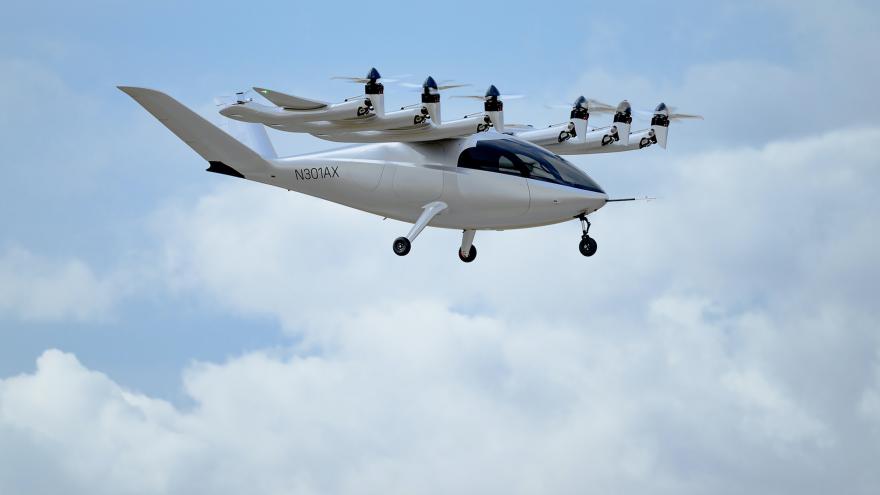In order to shuttle passengers to and from the airport through the air rather than congested roads, United Airlines gave a company developing electric aircraft a $10 million deposit.
Since Archer, the firm producing the electric air taxis, is still in the development stage, it is unclear when or if the concept will materialize. On Wednesday, the business announced that it had completed the design of its production model. By 2024, according to Archer, the first of its four-seater helicopters might be in use.
According to analytics firm Crunchbase, California-based Archer, which was established in 2018, has raised close to a billion dollars. It describes the configuration of its aircraft as a “electric vertical takeoff and landing,” or eVTOL, configuration. According to the manufacturer, they will be able to go 60 miles at a speed of 150 miles per hour. The aircraft will take off similarly to a helicopter, twist its propellers while in the air to provide horizontal thrust instead of vertical thrust, and then use conventional wings to maintain flight as it advances forward.

According to the company’s website, its vehicles would be able to land on helicopter pads as well as more basic infrastructure, such as the tops of parking garages. It also states that the eVTOLs will be quieter than conventional helicopters, measuring in at 45 dBA, which is quieter than the background noise of a downtown urban area.
According to its website, Archer is testing its early vehicle on a weekly basis, but whether the skies will be littered with electric taxis in the future depends on whether Archer can overcome a number of significant obstacles. The business needs to obtain regulatory approval and demonstrate that its electric-powered aircraft work can be produced on an economical scale before it can start flying.
Adam Goldstein, CEO of Archer, stated on Thursday’s episode of CNN’s New Day that he hopes to obtain the necessary regulatory approvals by 2024, citing recent remarks made by the chairman of the Federal Aviation Administration.
“We must use extreme caution. Regarding the approval of aircraft like the ones Archer is making, interim FAA administrator Billy Nolen recently commented on “60 Minutes” that “we want to be very measured.” However, “this is real. This is taking place. From where we were just a decade ago, we’ve gone a long way.
According to one financial statement by United (UAL), using the aircraft for short airport runs might “lower CO2 emissions by 47% on a route between Hollywood and Los Angeles International Airport.” If Archer can keep its word, the agreement will likely cost $1 billion and the initial $10 million investment will cover 100 automobiles.
“We’ll utilize these planes to replace flights on the ground that are lasting 60 to 90 minutes,” Goldstein said, using the travel from Manhattan to Newark airport in New Jersey as an example. “These are excursions that are less than 100 miles.”

However, a spokeswoman for United points out that the routes from Hollywood to LAX and Manhattan to Newark are simply two examples, and that United has not yet specified the locations where the service would be offered.
There can be further difficulties. In order to scale its business, convince the public of the safety of its aircraft, find a sizable enough client base that can pay for its services, and accomplish all of this without going bankrupt, Archer will need to.
United first announced its plans to assist with the development of the aircraft in February 2021, and they established a joint committee to enable the firms to pool resources. United has branded its relationship with Archer as a part of its drive to be a carbon-neutral corporation by 2050.

